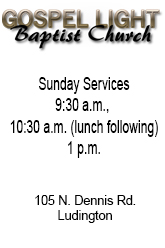
Pictured left to right: Patricia Dancz, Leslie Best and Amy Heer.
25 years of saving lives.
By Allison Scarbrough, Editor.
WEARE TOWNSHIP — On May 22, 1995 Amy Heer, Leslie Best and Patricia Dancz began training as the first dispatchers for Mason-Oceana 911. Twenty five years later, the dedicated trio remains on hand to serve Oceana and Mason counties’ residents during critical times — often in life-or-death situations.
Mason-Oceana 911 marks its 25-year anniversary, and the dispatch center on Oceana Drive in Weare Township opened in 2003.
Often dispatchers are forgotten when emergency first responders are acknowledged, because they operate “behind the scenes.”
“Dispatchers are the ‘first first responders,’ and they very seldom get the thanks or even acknowledgment,” said Leslie. “Dispatchers are never mentioned. ”
“There can be a really dark side to this job that people don’t realize,” said Mason-Oceana 911 Director Ray Hasil. “We don’t see those things with our eyes like the other responders do. However, we’re always the very first person they talk to you when something is discovered. They hear all the screams over the phone when a mother discovers her son has committed suicide or a phone call from somebody who’s been in accident.”
“Not being able to please everyone,” is probably the most challenging aspect of the job, said Amy. “They don’t necessarily call us when things are the best in their life. And we’re the first one they have contact with. A lot of them don’t like to hear what they’re being told. Instantly I’m the bad guy. People get frustrated with you. It has an effect on you.”
The three unsung heroes did finally get the credit they deserved. They were honored for their quick actions during a helicopter crash on a cold December day in 2012 in a remote, swampy area near Walkerville. Pilot Thomas Slocum, 49, died on impact. Passenger, then 28-year-old Matt Williams, was airlifted by AeroMed to Spectrum Health in Grand Rapids. Williams miraculously survived the crash — thanks to Amy, Leslie and Pat. Their fast response got Williams the help he needed.

“Matt Williams, the survivor, has remained a loyal fan of ours,” Leslie said. “When we went for our millage, he was our most vocal suporter. He has never forgotten us.”
“He was in ‘No Man’s Land’ in a swamp,” said Pat. “He never would have survived the night. He was soaking wet. It took an hour to find him and two hours to get him out.”
“There was a lot of coordination to figure out where he was,” Amy said. “A DNR officer started trucking through the swamp and started hollering.”
The Michigan Association of Public Safety Communications Officials awarded the dispatchers the prestigious “Communications Team of the Year” award in 2013. Their plaque reads: “When a collection of brilliant minds, hearts and talents come together… Expect a masterpiece. For your team life saving efforts during the 2012 helicopter crash.”
Although that was a tough call to handle, it doesn’t compare to the call that came in a few years earlier. “It was Oct. 24, 2010,” Amy said. “It was early afternoon, and we got a call out by Silver Lake out by the dam. A couple found a gentleman down on the ground unresponsive, blue. They started CPR. It was my great idea to get a run on the vehicle and find out who this person is, so we can contact family. Kris (Kokx) ran it, and she came over and gave me a grip of death on my arm, and it was my husband and he didn’t make it.”

Amy Heer (center) and Patricia Dancz smile as their colleague and friend Leslie Best speaks during an interview with local media.
After hearing the tragic news, Ray came to Amy’s aid. “We’ve got a crisis up here,” Amy recalled Kris saying as she relayed the horrible news to their boss. “He rushed me to hospital,” Amy said. “It was the worst time. We’ve all had personal things that have happened.”
Pat recalled the time her husband was in an industrial accident. “Guys that you know show up knocking on the door after working all night,” she said of the officers coming to her house to relay the news after she had finished the night shift.
The stats that the threesome has logged since moving into the 911 center in 2003 are jaw-dropping. Pat has logged 34,000 911 incidents; Leslie, 38,500; and Amy, 48,000.
Ray describes Amy as “freaky fast.”
“She answers the phone before it even finishes ringing,” Pat said of her colleague.

The Mason-Oceana 911 Center.
Prior to moving into the 911 center, operations took place in the basement of the Oceana County Sheriff’s Office. The three underwent training from May through September. On Sept. 11, 1995, Mason-Oceana 911 went on the air at 9:11 p.m., said Ray.
“This is a place that started from scratch,” he said. “There was no training manual. They went through these first three months just trying to learn this job that didn’t even exist. It was baptism by fire.”
“It took us four and a half years from concept to going live to start this place,” he added.
Mason-Oceana 911 was either the first or second multi-county center in the state, said Executive Assistant Connie Blaauw.
The three dispatchers reminisced about that first shift after going online.
“My radio didn’t work at all, so I thought that was wonderful,” Amy joked.
“The room was packed — it was hot. It was pins and needles,” she recalled.
“I remember you wanted a survival kit,” Leslie said to Amy. “With a barf bag,” Amy quipped, recalling the tension of that first day.
Leslie said that in the early years the dispatchers had to use punch cards to track calls, a system which is now all computerized.
“It was all pre-numbered by agency,” said Amy. “You would fill out the location, caller, phone number, type of complaint — like an old time clock. We kept track of everybody’s activity on paper.”
“We would stack them in front of our consoles,” said Pat.
Leslie recalled the old days of transitioning rural route addresses to actual house numbers. Dispatchers had to literally walk around some communities to develop a mapping system with the addresses.
Cell phones have been a major game changer for 911 dispatch. “Now everybody has one,” said Amy.
There are three dispatchers on the dispatch floor from 8 a.m to 2 a.m., said Ray. Then, there are two from 2 a.m. to 8 a.m. And then the third person comes back on.
“This job is so hot and cold,” Amy said. “It takes just one little thing and then everybody is calling. There are times when that phone just doesn’t stop, You have calls pending and you don’t have enough officers to go on them.”
They all agree that Fridays and Tuesdays are the busy days. “Crazy things happen on Tuesdays,” said Leslie. “Tuesdays statically are just as bad if not worse than a weekend day. ”
As far as the high amount of stress that comes with the job, “You have to vent and let it go,” said Amy. “I think experience helps,” said Pat. “The longer you do this job, you more you know how to handle the bad stuff and how to let go of the bad stuff. I remember going home and crying and saying, ‘What I’m doing here?’ Now it stinks, but you have to let it go.”
Each of the three women has children, and their kids have experienced many holidays without their moms because they’re working to keep the community safe.
“Holidays don’t necessarily fall on holidays,” said Leslie. “Santa Claus and the Easter Bunny came whenever Mom was off.”
“You often have to cancel plans last minute,” said Pat of being called in to cover a shift.
The three dispatchers all have a sense of humor that keeps them laughing even in stressful times. Although, some of those stressful calls have a lasting impact.
They have experienced horrific calls like people calling 911 just prior to committing suicide.
“I took a call when a guy drank toilet bowl cleaner wanting to kill himself,” said Pat. “As I’m talking to him, he changes his mind and doesn’t want to die. He died on the phone with us. I literally heard his last breaths. That is probably the hardest call I ever took.”
“I heard a guy shoot himself on the phone,” said Amy. “He died when we were on the phone.”
“We don’t want to see what those things look like,” Ray said. “Your brain draws those conclusions. At least the responders have some sort of closure. For people in this field of work, it can get to you because you’re making the pictures yourself.”
“You harden, otherwise it will eat you up,” said Amy.
“What you guys do every day, you’re in charge of a scene until some public safety entity gets there,” Ray said to his dispatchers.
Pat’s quick thinking helped save an elderly woman during a massive apartment complex fire at the Parkview Manor in Hart in the middle of a frigid December night in 2016. “An elderly lady was trapped inside on the second floor, and Pat talked her through it, and she was saved,” said Ray. “Pat talks her into a bedroom and stays on the phone with her and keeps her calm. Meanwhile they’re coordinating getting a ladder and got her out.”
“You can have all the training the world, but there are so many things that you just don’t have training for,” Ray said. “You have to be able to — on the fly — talk people through a really hard time and keep them safe.”
“Then, at the same time, other calls are coming in while you’re on the phone trying to help the parties. You have to multi-task.”
Amy took the call of the shooting death that occurred in Free Soil Township April 16, 2019. Corey Ryan Beekman is accused of murdering William Buchanan, 32, of Mears and wounding 32-year-old Kaitlin Buck with a gunshot to the arm. He faces charges of second-degree murder, felonious assault and two counts of felony firearms. His case has not yet gone to trial.
“She’s responsible for trying to keep that person alive over the phone,” said Ray. Amy stayed on the phone with Buck for an hour. “She’s hiding in the closet with her two kids. That was a pretty amazing call. Fifteen minutes later, he calls to surrender, and Amy picked up that call too.”
A little advice for 911 callers is to make sure you know your address, crossroad and what township or village you live in,” Leslie said. It’s amazing how many 911 callers do not have that information when they call for help.
“They are the lifeline for every responder,” said Connie. “The amount of stress is amazing that they have dealt with over the 25 years.”
Now in the midst of the COVID-19 pandemic, a tough job just got even harder. There is a long list of health-related questions dispatchers must ask callers if a first responder is being sent out to the scene. Some people are not cooperative about truthfully answering the questions and some become rude when they are asked.
“There has been a huge increase in domestics,” said Pat.
The dispatchers have observed that people are waiting longer to call 911 now when they are truly sick. “People are waiting until the last possible second, because they are scared to go to the hospital.”
The job certainly offers a lot of variety. “You never know what you’re going to get when you go to work,” said Pat.
“Coffee and Mountain Dew keeps this place running, and Dairy Queen keep these people happy,” Ray said.
The three women have formed a sisterhood over the years. They have served as babysitter, birthing coach and godmother for each other’s kids.
“You’re on a 12-hour shift with each other — it’s more time than you see your own family,” said Ray.
Please consider helping fund local news. Oceana County Press is available for free thanks to the generous support of our advertisers and individuals who support our service.
This story is copyrighted © 2020, all rights reserved by Media Group 31, LLC, PO Box 21, Scottville, MI 49454. No portion of this story or images may be reproduced in any way, including print or broadcast, without expressed written consent.
















































.png)